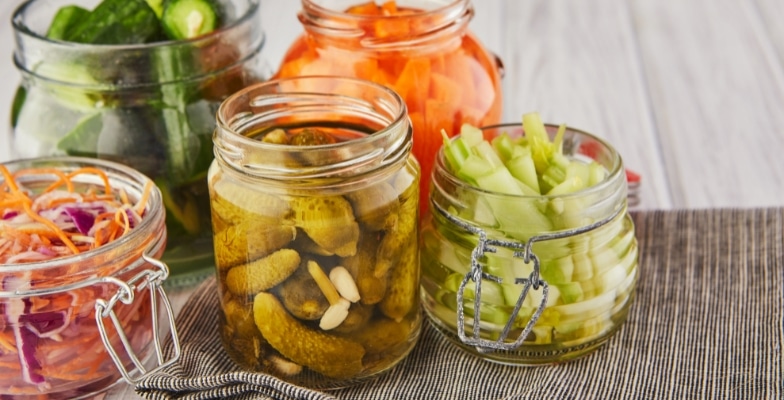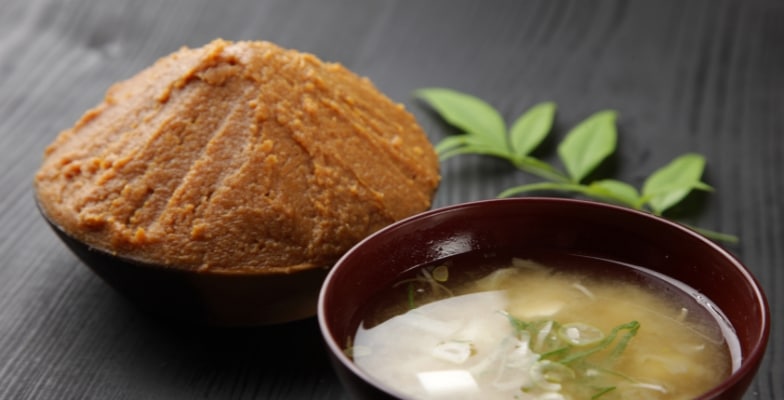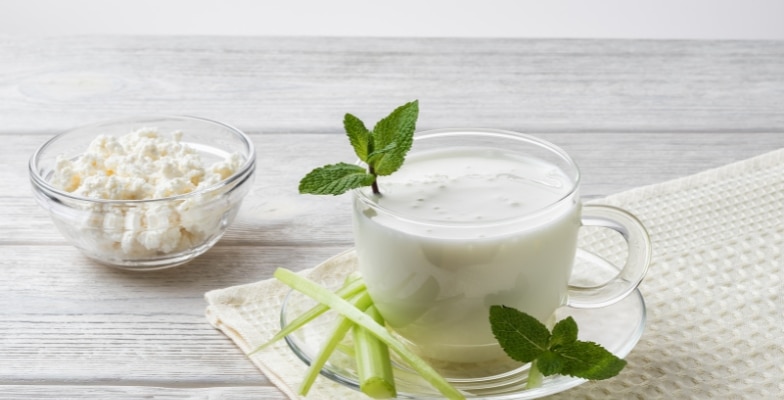Is Canola Oil Good For Health?
- Introduction
- What Is Canola Oil?
- Canola Oil Health Benefits
- Canola Oil Health Concerns
- Conclusion And My Recommendation

Introduction
I have discovered with advancing years that few things are entirely black or white, but more often, different shades of grey.
~Jeffrey Archer
In the last thirty years, canola oil has taken up a lot of space in cooking oil aisles and grocery store shelves. Media and the Internet are full of contradicting statements about their impact on our well-being.
Is canola oil the healthiest oil that can replace expensive olive oil or a noxious oil which can harm our bodies? Maybe it’s time to clear up a few fundamentals about canola oil.
What Is Canola Oil?
For many years canola oil and rapeseed oil, which contains a high amount of toxic erucic acid, have been thought to be the same. They both belong to the Brassica family, like cabbage and mustard.
In the 1970s, scientists in Canada were able to produce a consumable version of rapeseed varieties b. napus, and b. rapa with less than 2% toxic erucic acid and fewer glucosinolates.
Hence the name canola is derived from Canada (can) and ola (oil). Most canola plants are genetically modified (GMO) to improve yield, oil quality, and tolerance to herbicides or weeds. 1https://www.canolacouncil.org/oil-and-meal/what-is-canola/
According to the Canola Council of Canada, canola’s official definition is. 2https://www.canolacouncil.org/oil-and-meal/what-is-canola/
‘Seeds of the genus Brassica (Brassica napus, Brassica rapa or Brassica juncea) from which the oil shall contain less than 2% erucic acid in its fatty acid profile.’
The latest GMO varieties have less than 0.01% erucic acid, down from an average of 0.5% a few decades ago.
Canola Oil Nutritional Value
One tbsp (15ml) of canola oil provides 120 calories. Below is the nutritional breakdown in percentage (%) by weight of total fat and vitamins E and K. 3https://en.wikipedia.org/wiki/Canola_oil
Saturated fat- 7.4%
Polyunsaturated fat- 28.1%
Omega-3- 9.1%
Omega-6- 18.6%
Omega-6 to omega-3 ratio- 2:1
Monounsaturated fat- 63.3%
Trans fat- 0.4-4.2 %
Vitamin E- 12% of the reference daily intake
Vitamin K- 12% of the reference daily intake
Canola Oil Health Benefits
The fats in canola oil are 93% unsaturated (MUFA and PUFA). Studies show that monounsaturated fats (MUFA) may lower ‘bad‘ LDL cholesterol in the blood and help control blood glucose.
Canola oil also has omega-3 and omega-6 fatty acids. In 2006, the U.S. Food and Drug Administration authorized the following qualified health claim for canola oil: Studies suggest that canola oil is associated with decreased risk of coronary heart disease (CHD). 4https://www.ncbi.nlm.nih.gov/pmc/articles/PMC3746113/
Limited and not conclusive scientific evidence suggests that eating about 1 ½ tbsp(19g) of canola oil daily may reduce the risk of coronary heart disease due to the unsaturated fat content in canola oil.
But canola oil is to replace a similar amount of saturated fat and does not increase the number of calories you eat in a day. Canola oil is a light, clean oil with a neutral flavor and is economical. These factors make it a favorite in the commercial food industry. 5https://www.canolacouncil.org/oil-and-meal/canola-oil/
Canola oil has a high smoking point (375°-425° F) and can occasionally be used for sautéing, pan-frying, and baking. 6https://www.canolacouncil.org/oil-and-meal/canola-oil/culinary-qualities-of-canola-oil/
The Journey Of Canola Seeds To Canola Oil
The four most commonly consumed vegetable oils are soybean, canola, palm, and corn. They are RBD oils, which stand for refining, bleaching, and deodorization. Canola seeds are cleaned and preheated to 35°C, then flaked for 15-20 minutes at 80°-105°C to rupture the seed’s cell walls.
Next, the canola seed flakes are pressed in a series of screw presses or expellers to pull oil out. About 50-60% of the oil is extracted, and the remains form a press cake, which still contains 18-20% of the seeds’ oil.
Hexane is then used as a solvent to remove most of the remaining oil from the press cake. Hexane is then stripped from the oil by a process known as toasting, which involves heating at (95–115°C) for a third time with steam.
Free fatty acids and other components are removed from the oil by bleaching. Deodorization is the final step of steam distillation. It is to obtain a bland and odorless oil. 7https://www.canolacouncil.org/oil-and-meal/what-is-canola/how-canola-is-processed/
Canola Oil Health Concerns
Now let’s look at some concerns about canola oil before making up our minds about it.
1) A Few Of The Processing Steps Above Raise Red Flags
Dr. Guy Crosby of Harvard School of Public Health wrote that heating bleached canola oil at 220°C for many hours reduces linolenic acid content by almost 20%.
During exposure to high temperatures, a small amount of unsaturated fatty acids, especially the essential omega-6 linoleic and omega-3 linoleic acids, transform into trans-fatty acid isomers. 8https://www.hsph.harvard.edu/nutritionsource/2015/04/13/ask-the-expert-concerns-about-canola-oil/ The refining process distinctly decreases micronutrients and antioxidants in canola oil. 9https://journals.plos.org/plosone/article?id=10.1371/journal.pone.0212879
2) Oxidation Stability Is One Of The Most Important Quality Parameters Of Edible Vegetable Oils
Besides producing unpleasant odors, oxidation is responsible for losses in flavor, texture, consistency, appearance, and nutritional value. The more unsaturated and less saturated a fat is the faster the oxidation reaction proceeds.
A study raised concerns that polyunsaturated fats oxidize rapidly, so they cannot be stored for a long duration. Linolenic acid is oxidized the most rapidly, followed by linoleic and oleic acids. Canola oil is rich in linoleic and oleic acids. 10https://www.ncbi.nlm.nih.gov/pmc/articles/PMC6100155/
There appears to be a connection between canola oil and oxidative stress, as well as elevated inflammation. Inflammation triggered by oxidative stress causes many chronic diseases like cancer, heart failure, heart attack, and inflammatory diseases. 11https://www.ncbi.nlm.nih.gov/pmc/articles/PMC3215974/, 12https://pubmed.ncbi.nlm.nih.gov/29920087/
3) Commercial Frying In Canola Oil Can Increase The Total Trans-Fatty Acid Content
When scientists fried French fries in oil heated at 185°C (365°F) for seven hours per day for seven days, trans-fatty acids increased from 2.4-3.3% by weight of total fat. 13https://www.ncbi.nlm.nih.gov/pmc/articles/PMC4711448/
4) Over 90% Of canola Crops In Canada And The United States Are Genetically Modified (GMO) For Desirable And Cost-Effective Yield
Some researchers believe that consuming GMO foods can contribute to health issues like allergies, cancer, and antibiotic resistance. 14 https://oxfordre.com/environmentalscience/view/10.1093/acrefore/9780199389414.001.0001/acrefore-9780199389414-e-21
5) Canola Oil Is Higher In Omega-6 Than Omega-3 By A Ratio Of 2:1
Omega-3 and omega-6 are essential and biologically active fatty acids that play necessary functions in our bodies. Scientists believe that omega-6 is pro-inflammatory, which means it supports inflammation, and omega-3 is anti-inflammatory, reducing inflammation. 15https://www.hindawi.com/journals/jnme/2012/539426/, 16https://www.ncbi.nlm.nih.gov/pmc/articles/PMC6269634/, 17https://www.ncbi.nlm.nih.gov/pmc/articles/PMC4808858/, 18https://www.ncbi.nlm.nih.gov/pmc/articles/PMC5598746/
A healthy ratio of omega-3 to omega-6 is essential to prevent chronic conditions like diabetes, dyslipidemia, obesity, and heart disease. Nutritional Anthropologists believe that nomadic hunters survived on eating land animals, and their ratio of omega-6 to omega-3 was 4:1. Greenlanders and Innuits dependent on a diet of seals and fish (an omega-3 rich diet) had a ratio of 1:4.
Studies suggest that our natives got into trouble when they deserted their traditional diets and lifestyles for western living. The intake of omega-6 fatty acid increased, and omega-3 fatty acid intake decreased, resulting in a significant increase in the omega-6 to omega-3 ratio from 1:1 during evolution to 20:1 today.
Related Article: Omega 3 Fatty Acids Benefits And Daily Requirement
Conclusion And My Recommendation
We all need to balance our diet with a variety of oils to get nutritional benefits and flavors. Many healthy oils on the market are not prone to oxidation or are subject to extensive refining and processing.
My choice for cooking oil, depending on the cooking mode, is a combination of virgin olive oil and different cold-pressed oils like mustard oil, sesame oil, and flaxseed oil. Akash (Founder @ Fabulous Body) passionately supports ghee and coconut oil.
Related Articles:
What do you think about this article? Have any questions? Let me know in the comments below!

Skill-Based Education.
Global Recognition.
Powerful Community Building
Secure a certificate of completion in as little as a day by graduating from one of our free courses.
Get Access to Our Free Courses. No Credit Card Required.

Fabulous Body Membership
Your All-Access Pass to A Fabulous Body & A Rewarding Career
25+ Certificate Courses & Programs, All Included
15 Day Free Trial, 100% Money-Back Guarantee
About Kamini Thakar
Kamini is a very skilled writer/content creator. As a part of Fabulous Body for years, she has authored many articles really proving her prowess in acquiring and presenting knowledge about various health & nutrition topics.











Really helpful
You guys are amazing
Thanks Jena:)